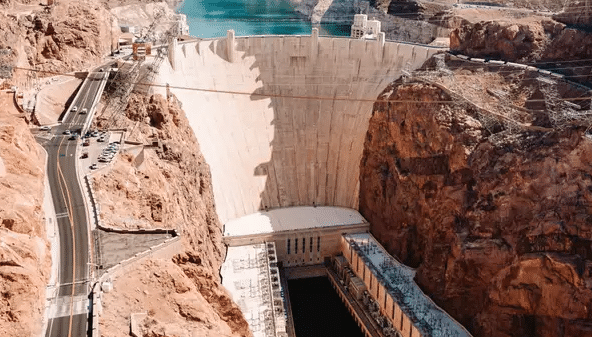The Hoover Dam, also known as the Boulder Dam by older generations, is a concrete arch-gravity dam in the Black Canyon of the Colorado River. The dam lies on the border of the states of Nevada and Arizona.
It was built between 1931 and 1936 as a means to provide hydroelectric power to surrounding settlements. However, survey operations for the creation of the dam started back in 1900 when Boulder Canyon and Black Canyon were being examined as potential regions which could support the generation of electricity, irrigation, and flood control. In 1928, Congress, gave the project the go ahead. The winning bid for the construction of the dam was won by a conglomerate of construction companies in Nevada, Six Companies Inc.
Also Read: Hoover Dam explosion: All you need to know
Even though a concrete dam of that size had never been built before, the consortium got to work, using some engineering techniques that hadn’t been proven so far. Over the course of its five-year construction time, the project took the lives of over one hundred workers. Despite all the hurdles, Six Companies finished the dam two years ahead of schedule.
While the project was started under the Herbert Hoover administration, it only finished construction under the tenure of President Franklin D. Roosevelt. Under Roosevelt’s presidency, the dam was renamed to the Boulder dam. However, in 1947, Congress restored it to its original name, the Hoover Dam.
The construction of the dam has had adverse effects on the Colorado River Delta. Earlier in the history of the River, the region had experienced natural flooding. With the construction of the dam, natural flooding ceased and led to species of plants and animals that had adapted to the flooding, to suffer. The dam decimated the population of the native fish and today, as a result, four species, the Bonytail chub, the Colorado pikeminnow, the Humpback chub, and the Razorback sucker have been listed as endangered by the U.S. government.







